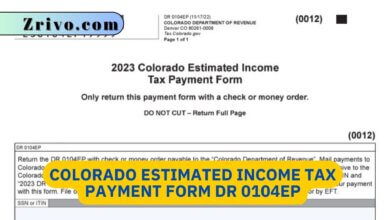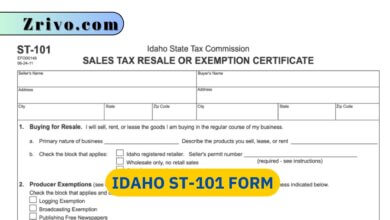Wisconsin State Income Tax 2023 - 2024
If you work or live in Wisconsin, you're likely to pay Wisconsin state income taxes. The same as the federal income tax rates, the Wisconsin state has marginal tax rates. You pay more as your taxable income increases.

Contents
It’s essential to understand the state income tax rate in Wisconsin. You need to know several things, including the state’s Earned Income Tax Credit, Sales tax rate, and Alternative minimum tax. All of these things can affect your taxes. If you’re not careful, you may owe more than you owe.
Individual income tax rates
Individual income tax rates in Wisconsin vary by income. Taxpayers must pay state income taxes on their income, including earnings from selling goods or services. The top individual income tax rate in the state is 7.65%. Those with taxable income above $300,000 must pay a 7.75% tax rate. For married couples filing a joint tax return, a 15% reduction applies to taxpayers with taxable income between $32,330 and $355,911.
In the past decades, Wisconsin’s income tax has become less progressive. But that does not mean that the overall burden is decreasing. Instead, the percentage of tax collected from the top income group is increasing, and the average rate is falling. These changes reflect the changing economy.
The average tax rate in Wisconsin decreased from 3.1% to 2.5% in the last two decades. However, it is crucial to understand that many factors affect the average tax rate, including the size of the exemptions and credits.
In 1980, the top 1% of taxpayers accounted for 13.5% of all AGI in the state. That same year, the bottom 80% of taxpayers accounted for 37.2%. During the same time, the highest-income group paid an average tax rate of 9.2 percentage points higher than the lowest-income group.
The middle 20% of taxpayers saw their average tax rate drop from 3.1% to 2.5%. Meanwhile, the bottom 20% of taxpayers saw their average tax rate rise from 0.2% to 0.5%. This is due to the Manufacturing and Agriculture Credit, which was phased in over four years.
While the Wisconsin income tax has become less progressive, the system has been reasonably stable. It remains more developed than the national average. And while the state has a large income gap between the highest and the lowest earners, the gap has narrowed in recent years.
Since the mid-1980s, the state has reduced its number of income brackets. Today, only the top one percent of taxpayers earn enough to qualify for the top individual income tax bracket.
While the average tax rate for the top 1% has declined, the tax system is still relatively progressive. The maximum marginal tax rate in the state is now the ninth-highest in the country.
Sales tax rate
There are a variety of factors that influence a state’s sales tax rate. This is why it is crucial to understand the rate that applies to your particular purchase. In addition, there are many different levels at which the tax is collected.
The Wisconsin state sales tax rate is 5%. However, it may differ depending on the type of sale. For more information on sales taxes in the State of Wisconsin, visit the Department of Revenue website.
Sales tax is a form of personal liability that is imposed on transactions. Merchants must charge the correct rate of tax to all their customers. Some examples of items that are taxable include groceries, clothing, automobiles, and digital goods.
Sales tax also affects individual income taxes. Wisconsin’s top marginal rate is 7.65 percent. It is one of the highest in the nation. But, the State of Wisconsin has made significant progress in improving its individual income tax rates.
Wisconsin’s top marginal rate is still higher than the top rates in all but eight states. As a result, Wisconsin is a prime candidate for pro-growth reforms. During the past two years, tax reform has swept across the country. Several states have enacted flatter structures and reduced income tax rates.
However, Wisconsin’s corporate income tax rate is high compared to the rest of the country. The state is in the perfect position to pursue pro-growth reforms that reduce speed.
With a projected budget surplus of $3.8 billion in the 2021-23 biennium, Wisconsin is in a prime position to invest in tax reform. Three reform options would shift more of the state’s reliance on the sales tax. Each option would generate a net tax cut of about $1.2 billion.
Option A, for example, would raise the sales tax rate to 6 percent. This would make Wisconsin more competitive for all types of businesses.
Option C would leave the corporate income tax at 6.5 percent. This option would maintain the same individual income tax rates as Option B.
Earned income tax credit
Wisconsin earned income tax credit is available to work for families with children. It is designed to boost income and reduce poverty. A Wisconsin family with at least one child can receive up to $6,728 in the 2021 tax year if they qualify.
There are some tax credits in the state of Wisconsin. Taxpayers must consult an accountant or a tax professional before filing a tax return. They may also want to check out a local tax assistance center, which will provide in-person help.
Currently, the state has four income brackets. The lowest income group pays an average rate of -3.8%, while the top income group pays an average rate of 5.4%. As a result, the gap between the highest and lowest groups has grown by nearly two percentage points over the last few years.
Another tax credit that is offered by the state is the Homestead Credit. This is a tax benefit for low-income earners and can be used to lessen the burden of property taxes.
The Manufacturing and Agriculture Credit also offers taxpayers a tax break. In the case of this credit, a portion of profits from agricultural and manufacturing activities are excluded from AGI. These are based on a percentage of the tax liability generated from those specific activities.
The refundable Earned Income Tax Credit (EITC) is one tax benefit often overlooked. In the case of this credit, low-income workers may keep more of their pay.
The EITC is a helpful tool in reducing poverty. However, it can be complicated to determine eligibility. To determine your eligibility, you must consider your household income and the size of your family. Also, be aware that not all federal deductions are eligible.
You should also be aware of the 401k deduction. If you have a 401k, consult your accountant or tax professional. 401k deductions can vary depending on the tax laws in your state.
Some tax changes have produced a more progressive system. For example, the Manufacturing and Agriculture Credit was phased over four years.
Alternative minimum tax
An alternative minimum tax is an alternative method of taxation. The United States Congress first enacted it in 1969. Today, it is used in six states, including Wisconsin.
The tax system was created to prevent taxpayers from combining exemptions or exclusions from federal income tax. In addition, it also requires high-income taxpayers to pay the minimum tax.
Currently, tens of millions of taxpayers pay the AMT every year. This includes one in three Wisconsin taxpayers. But the reach of this tax has been dramatically reduced by the Tax Cuts and Jobs Act. If the Legislature chooses to eliminate the tax, it would positively impact Wisconsin’s economy.
During the 1990s, the AMT increased dramatically. In 2000, the number of taxpayers who paid the AMT nearly doubled. Since then, the AMT has been reformed.
There are a variety of situations that can trigger AMT. These include depreciation, passive activity losses, and net operating losses. Another concern is when taxpayers’ regular taxable income is less than their alternative income.
However, there are a few exceptions. For example, a taxpayer with a disabled spouse who cannot work can take advantage of the homestead credit. Also, a child under eighteen years old may take up to $5,000 in adoption expenses.
Some other tax breaks for Wisconsin residents have been eliminated. Among them are 17 notable interest tax credits.
However, these cuts have cost the state substantial revenue. The budget deficit for the current fiscal year has been estimated to be $2 billion. Moreover, the state’s tax breaks to particular interest groups have cost the state billions of dollars over the years.
Nevertheless, the recent changes in tax rates have reinforced the growing wealth disparity between middle and lower-income Wisconsin families. Meanwhile, higher-income Wisconsin taxpayers have been paying a higher income tax rate than those in neighboring states.
Despite its benefits, the state still needs to reform the AMT. Ultimately, this tax policy has created unnecessary complexity and confusion.
To repeal the AMT, Wisconsin should consider eliminating the tax preference for specific interest groups. Instead, lawmakers should focus on simplifying the tax code and allowing for more competitive economies.
Wisconsin state income tax rates are as follows.
- 3.54 percent
- 4.65 percent
- 5.30 percent
- 7.65 percent
These, of course, don’t mean without the tax brackets but it can give you a rough idea of what portion of your income might go towards Wisconsin state income tax.
Here are the Wisconsin income tax brackets.
Wisconsin tax brackets 2024
| Tax Rate | Single/Head of Household | Married Filing Jointly | Married Filing Separately |
|---|---|---|---|
| 3.54% | $0 – $12,120 | $0 – $16,160 | $0 – $8,080 |
| 4.65% | $12,121 – $24,250 | $16,161 – $32,330 | $8,081 – $16,160 |
| 5.30% | $24,251 – $266,930 | $32,331 – $355,910 | $16,161 – $177,960 |
| 7.65% | over $266,931 | over $355,911 | over $177,961 |
Deducting Wisconsin state taxes paid
The Wisconsin state income taxes paid are deductible. The improvements to the state and local tax deduction allow taxpayers to deduct pretty much the entire Wisconsin state taxes paid.
Also known as the SALT deduction, you can deduct up to $80,000 paid in Wisconsin state and local taxes paid. Even if you pay income taxes in more than one state, you are subject to this limit, but considering that Wisconsin and the states next to it have very low-income tax rates, it’s hard to exceed the $80,000 limit.
That’s, of course, assuming your taxable income is around the median average. Taxpayers with taxable income of more than $1 million can miss out on the SALT deductions due to the limits.
Wisconsin standard deduction
The standard deduction for Wisconsin residents isn’t fixed for everyone. You must calculate the allowed standard deduction you can claim for the 2021 taxes you’ll file in 2022.
The maximum standard deduction is $11,050 for single filers and $20,470 for married couples filing a joint return. If you’re filing separately or filing as the head of household, the maximum is the same as the single standard deduction.





